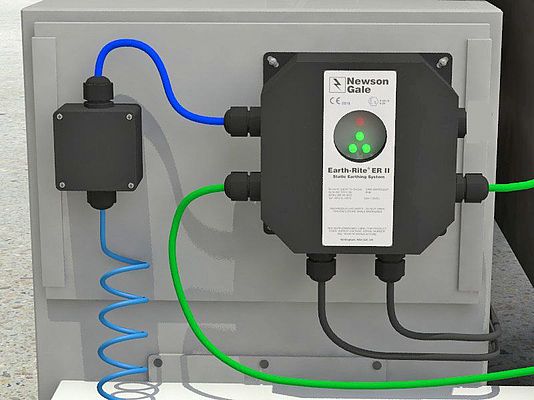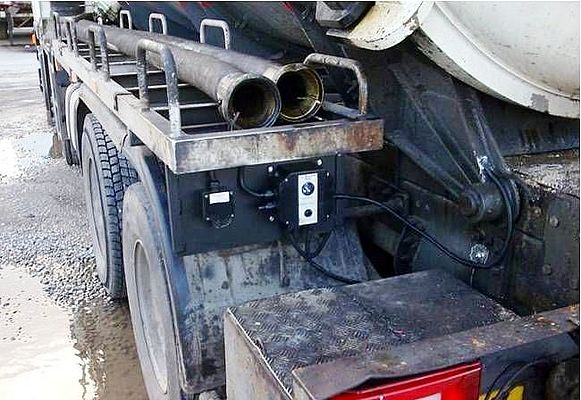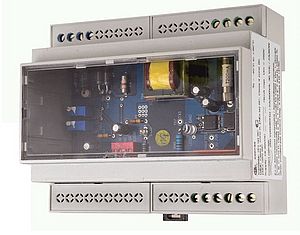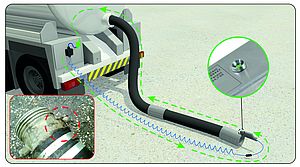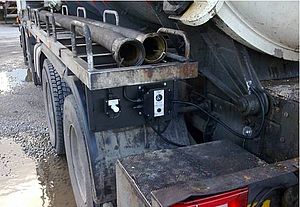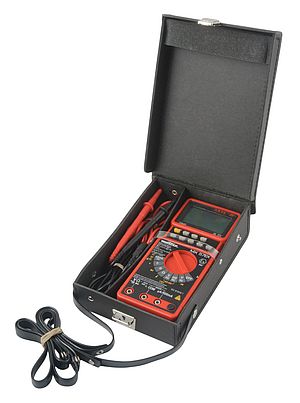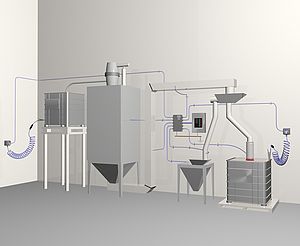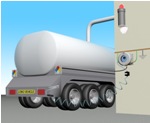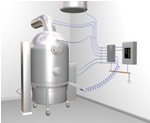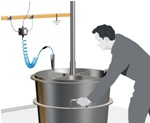This article will explore the current methods used to providing static earthing protection for vehicles operating in locations that do not have installed, or correctly specified, static earth monitoring systems.
Vacuum tankers provide a wide range of services to the hazardous process industries ranging from storage tank cleaning to the recovery of combustible materials resulting from leaks and spills. A key feature of this type of service is the recovery of materials in locations with potentially combustible atmospheres.
Static electricity is a well known ignition source within the hazardous process industries and because the generation and accumulation of static electricity is not visible to the naked eye, this “below the radar” characteristic, makes it an exceptionally precarious and dangerous hazard. Normally, the only evidence of static electricity being present during a transfer operation is when somebody sees or hears a static spark discharge. By then it may be too late to prevent the ignition of the surrounding atmosphere if it is in its combustible range.
Earthing vacuum tankers operating in hazardous areas eliminates the threat posed by static electricity and is an action that effectively connects the tanker to the general mass of the Earth, which is sometimes called “True earth ground”. The voltage induced on the tanker by the charged material is the key factor in a static spark discharge. Earthing ensures that no voltages are generated and permitted to accumulate on the tanker.
A solution that is appropriate to the potential hazard.
For over twenty years dedicated static earth monitoring systems have replaced basic earthing reels on the road tanker loading gantries of petrochemical and chemical sites, pharmaceutical sites, tank farms and food and beverage manufacturing sites. Due to the combination of the large quantities of combustible material being processed, the amount of charge that can be induced on tankers and the potential outcome of the ignition of the atmosphere, bonding reels were replaced with earth monitoring systems that were designed to monitor the integrity of the road tanker’s connection to earth so that electrostatic charge could not accumulate on the tank or chassis of the road tanker while product was being transferred. To enhance the safety of transfers at these locations, gantry mounted earth monitoring systems normally have an interlock function that stops the movement of product if the earthing system is disconnected from the road tanker.
Even though the potential and consequences of fires is, at the very least, the same for road tankers at dedicated loading gantries, vacuum tanker service providers and have not been in a position to provide this level of safety and protection of their personnel and tankers, or for their customer’s personnel and property.
Until now, vacuum tanker service providers have had to rely on very basic devices to earth their vehicles. This is simply because technology that is capable of verifying the quality of static earthing points in a mobile, quick and user-friendly way has not been available to drivers and operators. The method currently used consists of a simple earthing clamp attached to single core braided cable wound onto a reel.
Very often, vacuuming operations will be carried out on facilities and remote locations where “designated” earthing points may not be tested on a regular basis, are not accessible or do not exist. Bulk transportation companies can also have the same difficulties when they deliver product to customer sites where earthing systems are not up to current specifications, or worse still, are not installed.
When compared to the performance and safety of static earth monitoring systems, single core bonding reels have several major drawbacks. Unlike the security provided to road tanker drivers and loading gantry operators by gantry mounted earth monitoring systems, the vacuum tanker team running the recovery or transfer operation has no way of knowing if their tanker is connected to a good earth. Service providers, and customers, have concerns due to such limitations because the teams are connecting reels to earthing points that have neither been tested nor verified as being connected to a True earth ground.
In order to remove this uncertainty and provide vacuum tanker service providers with the same level of protection that gantry mounted static earth monitoring systems provide, Newson Gale developed the Earth-Rite MGV (Mobile Ground Verification ), giving the providers and customers of vacuum tanker services the same level of safety and performance that a gantry mounted static earthing system can provide. The only difference between a gantry mounted system and the MGV is that the MGV is a permanent component of the tanker for which it is providing static earthing protection.
The MGV incorporates the recommendations of API RP 2219 “Safe Operation of Vacuum Trucks in Petroleum Service”, which is the most relevant standard to address the precautions that should be put in place when vacuum tankers are being used to transfer combustible materials or are carrying out transfers in potentially combustible atmospheres.
With the Earth-Rite MGV system vacuum tanker service providers and bulk transporters can now match the levels of control and safety that have been available to loading gantry operators ensuring their employees, tankers, customer employees and customer properties are fully protected from the ignitions hazards associated with static electricity.


